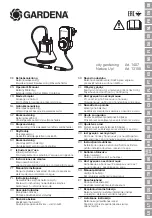
8 . Lambda 265 Users Guide
Basic Theory
Electromagnetic radiation can pass through most organic and inorganic compounds.
Generally, the UV range is from 190 to 380 nm and visible range is from 380-800 nm.
Figure 1. Electromagnetic Radiation
When continuous radiation passes through a sample, some is absorbed by the sample. An
absorption spectrum can be obtained by monitoring the radiation that penetrates the sample
and reaches a detector. For every substance, the absorption rate varies depending on the
wavelength of the radiation. Data from absorption spectra can be used for qualitative and
quantitative analysis.
A molecule remains in its ground state when it is stable, but it can transition to an excited
state when light energy is absorbed. This is termed absorption. (Figure. 2) When the excited
molecule returns to the ground state, it emits heat, radiation, fluorescence or
phosphorescence. This is termed emission. A molecule whose functional group has a double
bond between carbons or between carbon and another atom undergoes transitions in the
UV-Visible range. Functional groups that absorb light energy are called Chromophores.
Figure 2. Energy Absorption
Summary of Contents for LAMBDA 265
Page 1: ...LAMBDA 265 Users Guide UV SPECTROMETERS ...
Page 4: ...4 Lambda 265 Users Guide ...
Page 5: ...Introduction 5 Introduction ...
Page 18: ...18 Lambda 265 Users Guide ...
Page 19: ...Introduction 19 Safety Practices ...
Page 30: ...30 Product Title Hardware Guide ...
Page 31: ...Lambda 265 Installation ...
Page 35: ...UV Lab Software Installation 35 UV Lab Software Installation ...
Page 40: ...40 Lambda 265 Users Guide ...
Page 41: ...Interface Setup ...
Page 44: ...44 Lambda 265 Users Guide 44 7 Double Click USBCom CDM_20828 8 Select Extract ...
Page 51: ...Operating Procedure 51 Operating Procedure ...
Page 54: ...54 Accessories ...
Page 61: ...Accessories 61 ...









































